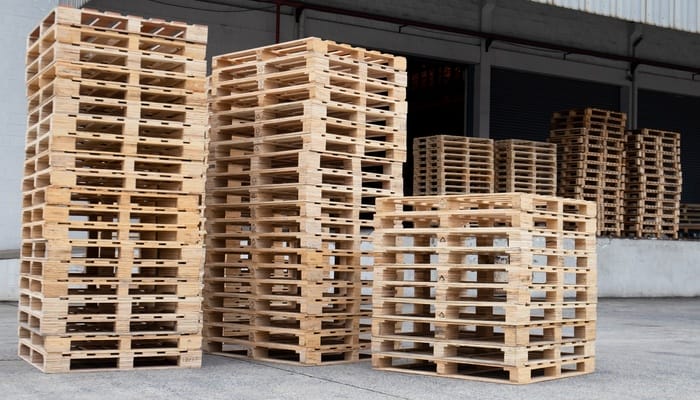Pallets might not be the first thing that comes to mind when you think about environmental impact. They seem like a mundane part of logistics and shipping, blending into the backdrop of warehouses and supply chains. However, the truth is, pallets carry quite a carbon footprint. Businesses and individuals alike can make better choices when it comes to pallets. Here’s how pallets impact your carbon footprint and what you can do to minimize it.
Pallet Production and Its Environmental Costs
Producing pallets requires raw materials, typically wood or plastic, both of which come with a cost to the planet. Wooden pallets come from timber, which contributes to deforestation. While manufacturers often source wood from fast-growing trees, the process still contributes to the depletion of vital forest ecosystems.
On the other hand, creating plastic pallets involves petroleum-based materials, which have their heavy environmental impacts, especially during extraction and manufacturing. Choosing responsibly made pallets or those treated with eco-friendly solutions can significantly reduce production-related carbon costs.
Fuel Consumption and Transportation
Pallets play a major role in transporting goods from one place to another. The weight and size of pallets influence fuel consumption during transportation, which directly connects to emissions. Heavier pallets result in higher fuel consumption, whether they’re in trucks, ships, or planes.
Opting for lighter and more durable designs reduces emissions and lessens the strain on transportation vehicles. Streamlining transportation logistics can also play a huge role in cutting unnecessary trips and, in turn, fuel use.
Landfills Overflowing With Discarded Pallets
The waste generated by pallets is staggering. Broken or damaged pallets, especially those that aren’t properly recycled, often end up in landfills, where they pile up for years and contribute to space shortages. Wooden pallets may decompose over time, but they release carbon dioxide and sometimes methane during the process.
Meanwhile, plastic pallets can take hundreds of years to break down. The habit of tossing used pallets aside rather than finding ways to reuse or repurpose them creates unnecessary waste.
Recycling and Reuse as a Path to Sustainability
Reusing and recycling pallets is one of the easiest ways to reduce their carbon footprint. You can often repair and reuse wooden pallets multiple times. Even when they’re no longer functional, you can turn them into mulch or repurposed for other projects.
Recycling plastic pallets into new ones ensures less demand for virgin materials, lowering their overall environmental impact. Businesses that establish recycling programs or work with pallet-return systems create a significant boost to sustainability efforts.
Exploring Eco-Friendly Materials
The materials used in pallets go a long way in determining their environmental impact. Shifting toward eco-friendly pallet treatments can make wooden pallets last longer, reducing the need to replace them constantly. Alternative materials, such as pallets made from bamboo or recycled composites, are rising as sustainable options.
These materials often combine durability with a smaller environmental impact during production and disposal. Making the switch to these greener choices cuts emissions and helps protect the planet.
Reducing Your Pallet Impact Starts Today
Pallets are far more intertwined with carbon footprints than most people realize. From their production to their eventual disposal, a pallet’s environmental impact is significant. By opting for recycled materials, lightweight constructions, or more sustainable options, you can make a positive difference. Choosing eco-friendly materials and treatments plays a crucial role in long-term sustainability.
Start making smarter, more sustainable choices for your pallet needs today. Together, we can keep logistics moving while giving the environment a much-needed breather.







